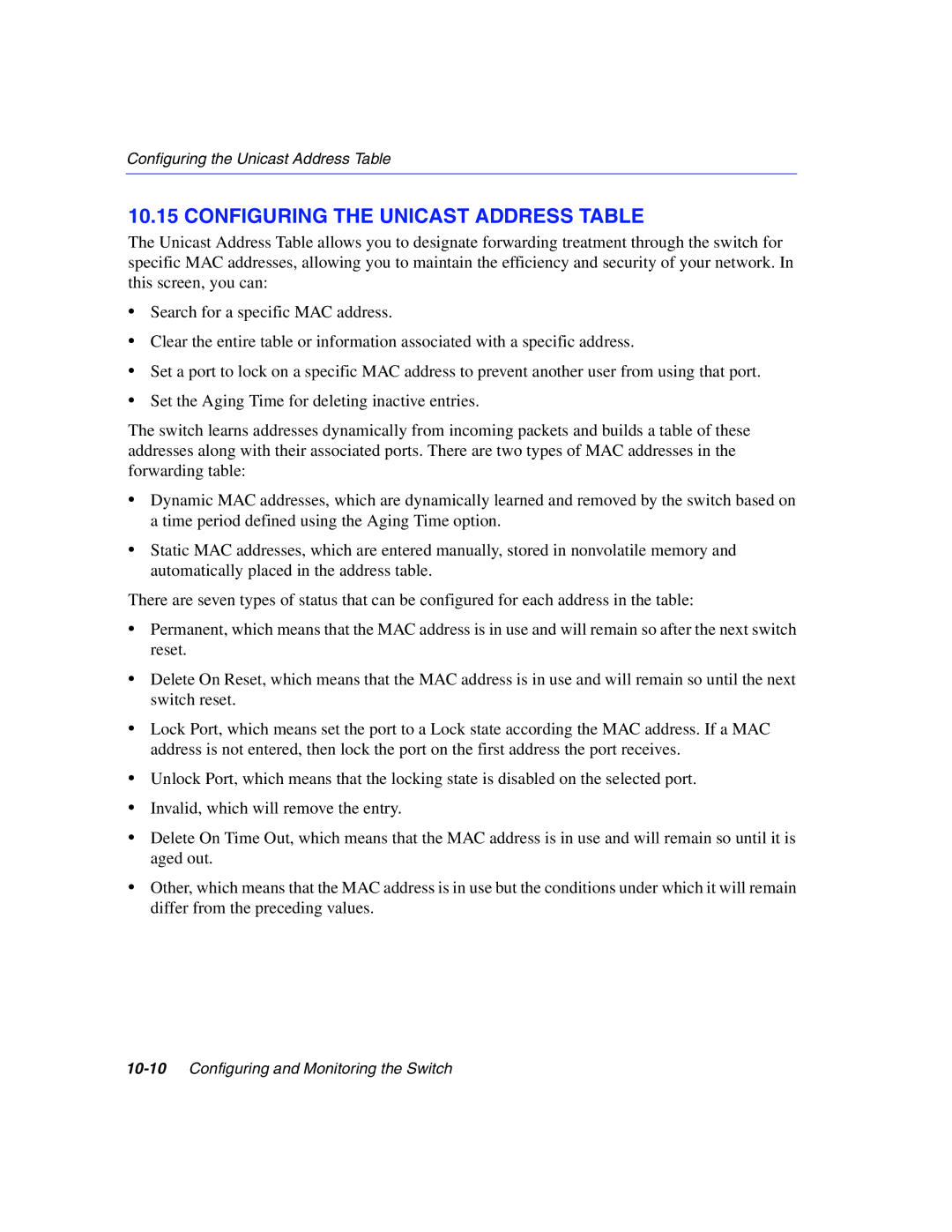Configuring the Unicast Address Table
10.15 CONFIGURING THE UNICAST ADDRESS TABLE
The Unicast Address Table allows you to designate forwarding treatment through the switch for specific MAC addresses, allowing you to maintain the efficiency and security of your network. In this screen, you can:
•Search for a specific MAC address.
•Clear the entire table or information associated with a specific address.
•Set a port to lock on a specific MAC address to prevent another user from using that port.
•Set the Aging Time for deleting inactive entries.
The switch learns addresses dynamically from incoming packets and builds a table of these addresses along with their associated ports. There are two types of MAC addresses in the forwarding table:
•Dynamic MAC addresses, which are dynamically learned and removed by the switch based on a time period defined using the Aging Time option.
•Static MAC addresses, which are entered manually, stored in nonvolatile memory and automatically placed in the address table.
There are seven types of status that can be configured for each address in the table:
•Permanent, which means that the MAC address is in use and will remain so after the next switch reset.
•Delete On Reset, which means that the MAC address is in use and will remain so until the next switch reset.
•Lock Port, which means set the port to a Lock state according the MAC address. If a MAC address is not entered, then lock the port on the first address the port receives.
•Unlock Port, which means that the locking state is disabled on the selected port.
•Invalid, which will remove the entry.
•Delete On Time Out, which means that the MAC address is in use and will remain so until it is aged out.
•Other, which means that the MAC address is in use but the conditions under which it will remain differ from the preceding values.
